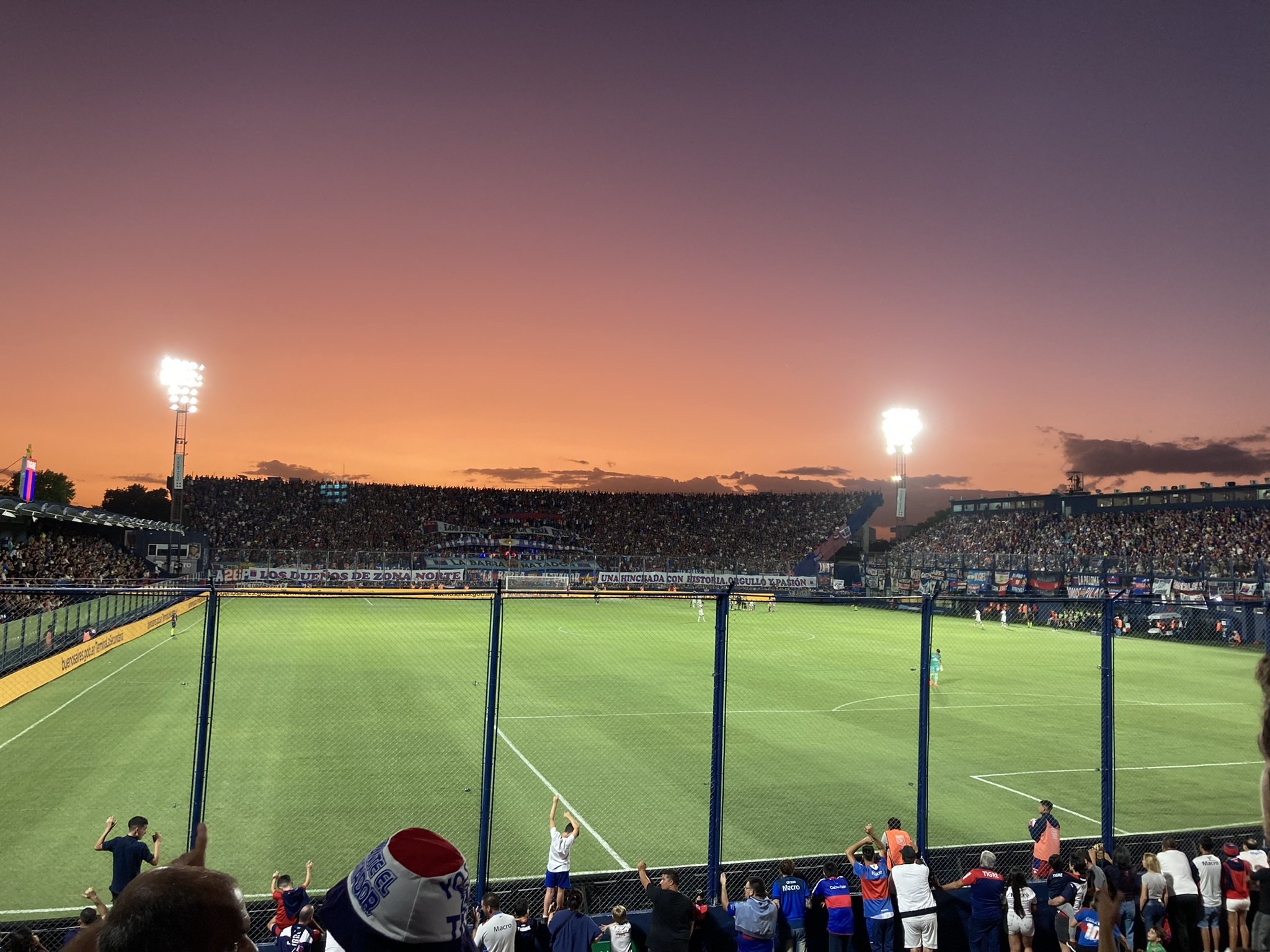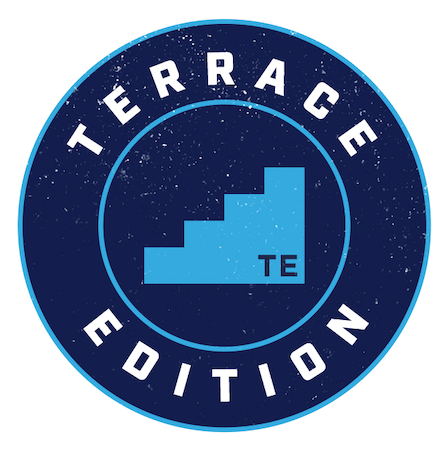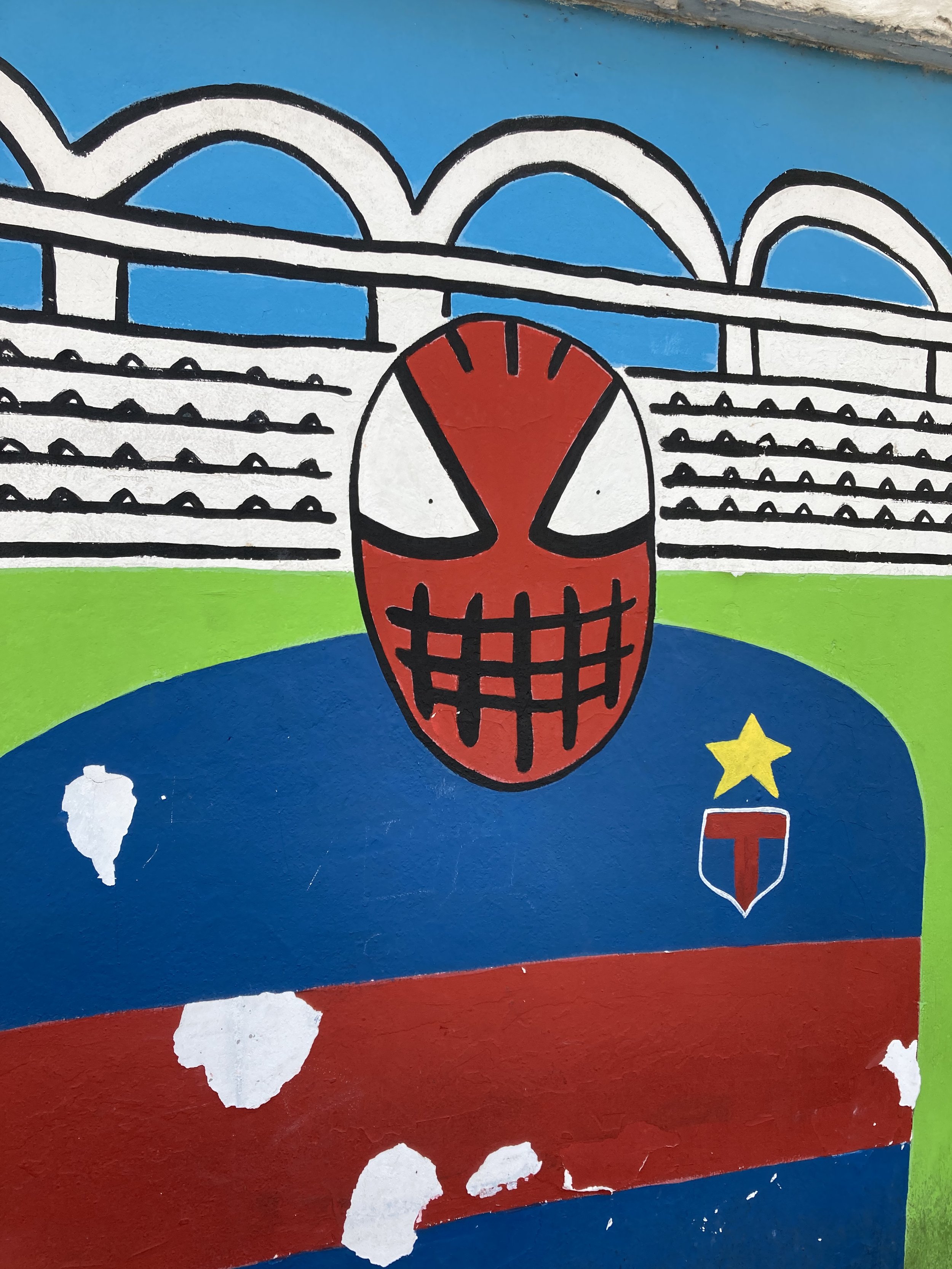Club Atlético Tigre

Words: Albert Hilton
Images: Albert Hilton
Take the train out of Buenos Aires city, get the northern bound Mitre line, and you might find yourself in the rather sleepy neighbourhood of Victoria, San Fernando, a beautifully peaceful, laidback area…
Until Tigre plays.
On the evening of August 2nd, 1902, a group of 12 friends called a meeting with the goal of forming a football club, just the next day, Club Atlético Juventud de Tigre was born.
The source of Tigre’s red and blue colours comes from Switzerland, more specifically the flag of the Ticino region, after Swiss trader, Adolf Leber, donated the first shirts to the founder and first president of the club, José Dellagiovanna.
After becoming one of the founding members of the Argentine professional game in 1931, Tigre were forced out of their original stadium in Rincón de Milberg, as it was deemed too far for other teams to reach, therefore president of the club, León Bourdieu, took it upon himself to move the club to a more accessible area, Victoria.
©Albert Hilton/ Terrace Edition. Club Atlético Tigre.
On the 20th of September 1936, the new stadium in Victoria was complete, and Tigre hosted Boca Juniors in a ‘housewarming’ friendly.
After years of bouncing between the first, second and third divisions of Argentine football, Tigre couldn’t have gotten closer to winning their first ever major title in 2008, finishing the Torneo Apertura level on points with Boca and San Lorenzo.
Tigre should’ve been awarded the title due to the head-to-head rule, however AFA decided to modify the rules meaning the three teams played a triangular playoff, where eventually Tigre lost out to Boca by a goal difference of just one.
Fortunately, not all effort was in vain as the following year Tigre participated in an international competition for the first time in the club’s history, playing their part in the Copa Sudamericana.
In 2010, the club registered historic wins against Argentine giants River Plate and Boca Juniors, beating Boca 3-0 at home thanks to a hat-trick from club hero, Carlos ‘Chino’ Luna, and two then months later they went on to demolish River 5-1 away from home.
Just two years later, Tigre reached the final of the Copa Sudamericana, where they controversially lost out to Brazilian side São Paulo, the second leg of the final was abandoned due to Tigre players refusing to play the second half after the players said they were attacked by the Brazilian police, sparking a rivalry between the two sides ever since.
©Albert Hilton/ Terrace Edition. Club Atlético Tigre.
In 2013, Tigre achieved qualification to the biggest competition in South America, the Copa Libertadores, where they eventually lost out in the round of 16 to Paraguayan side Olimpia.
After years of a major title eluding the club, Tigre finally got a star above their badge, winning the Copa de la Superliga in 2019, defeating Boca Juniors 2-0 with more than 25,000 fans making the journey to support them in Córdoba.
Upon winning the cup, they qualified for the 2020 edition of the Copa Libertadores, even though they had been relegated to the second division in the latter stages of 2019.
In 2021, Tigre made it back to the first division under the guidance of Diego Martínez, where they went on to reach the final of the Copa de la Liga a year later.
Since then, it’s been a rough rotation of managers and not much stability with Tigre currently battling it out at the wrong end of the table.
Only one thing is for sure, the fans of Tigre will always be present to support their team, through thick and thin.
You can hear the Tigre roar on the wind.
©Albert Hilton/ Terrace Edition. Club Atlético Tigre.
©Albert Hilton/ Terrace Edition. Club Atlético Tigre.
©Albert Hilton/ Terrace Edition. Club Atlético Tigre.
©Albert Hilton/ Terrace Edition. Club Atlético Tigre.
©Albert Hilton/ Terrace Edition. Club Atlético Tigre.
©Albert Hilton/ Terrace Edition. Club Atlético Tigre.
©Albert Hilton/ Terrace Edition. Club Atlético Tigre.
©Albert Hilton/ Terrace Edition. Club Atlético Tigre.
©Albert Hilton/ Terrace Edition. Club Atlético Tigre.
©Albert Hilton/ Terrace Edition. Club Atlético Tigre.
©Albert Hilton/ Terrace Edition. Club Atlético Tigre.
©Albert Hilton/ Terrace Edition. Club Atlético Tigre.
Albert is on X: @alberthltn and Instagram: @alberthilt0n



















